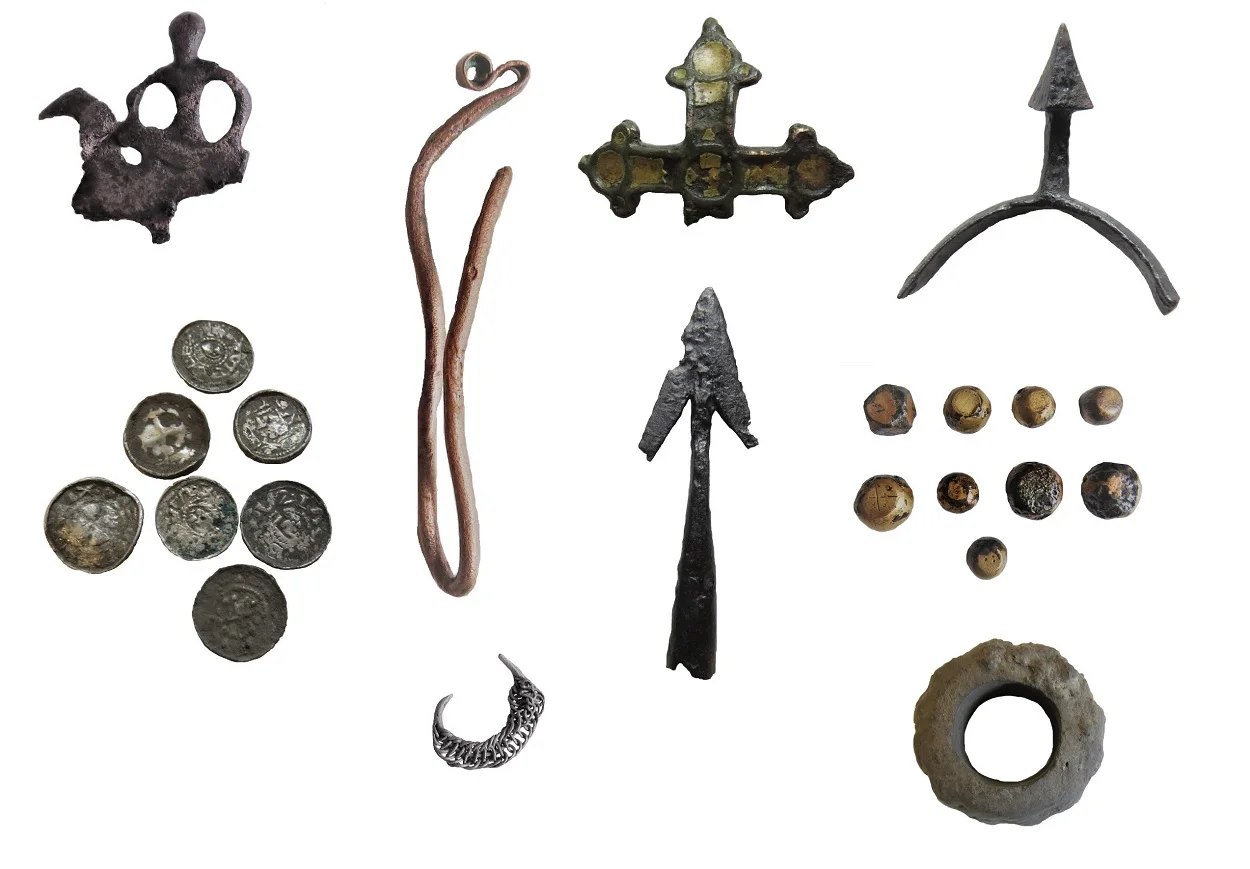Archaeologists have found a collection of Medieval artefacts dated from the 11th and 12th century AD in Daromin, a village in the Świętokrzyskie Voivodeship, south-central Poland.
Excavations were carried out by the Nadwiślańska Grupa Poszukiwawcza “Szansa” Association, in which archaeologists found a clasp and two denarii from the Roman period, and a rich collection of artefacts from the early Middle Ages.
Dr Marek Florek, from the Institute of Archaeology of the Maria Curie-Skłodowska University in Lublin, said: “Apart from fragments of pottery, there are: coins, including a denarii of Bolesław the Bold, silver, lead and copper alloy ornaments, lead and bronze crosses, everyday objects such as knives and flintlocks, lead and iron weights coated with bronze, militaria and elements of equestrian gear”.
Several of the items, such as the crosses, rings made of copper wire, silver ornaments and an appliqué depicting a rider, were imported from the historic region of Carpathian Rutheni or the Baltic.
Excavations also uncovered a small bronze representation of a horse and a lead mace, likely decorative symbols of military power. The bronze horse is of the Lutomiersk type which were worn by the knightly elites of the early Piast state.
Dr. Florek suggests that the finds, especially those of an elite nature, indicate that a knight’s court could have been located in the vicinity of Daromin in the 11th-12th century AD.
This interpretation is supported by the discovery of barrel-shaped and polyhedral bronze-coated iron weights.
“From the accounts of Ibrahim ibn Jakub, a Jewish merchant from Spain, who reached the Polish lands in the 1060s, we know that Mieszko I was supposed to collect taxes in the form of weights and used them to pay salaries of his men. Therefore, if there was a knight’s court in Daromin in the 11th-12th centuries, their presence, as well as elements of armament and elite items, should not be surprising,” added Florek.
The artefacts are currently being stored in the Sandomierz branch of the Provincial Monument Protection Office in Kielce for further study, after which they will be transferred to the Castle Museum in Sandomierz for display.
Header Image Credit : Dr Marek Florek





